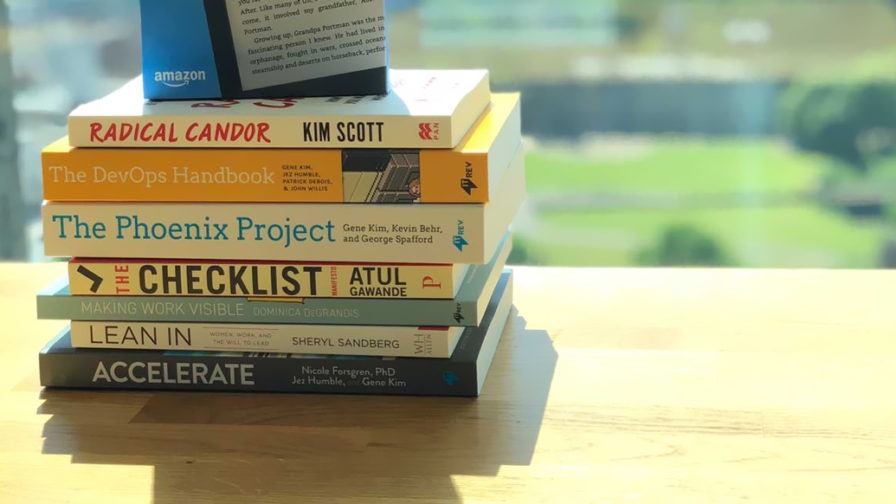
Before It’s too late let’s try to search for books written the old-school way, just before copy and past from AI became a practice, that are worth reading.
If you feel a little bit nostalgic you could choose to read a printed copy beside a warm fireplace drinking a glass of wine, ok your Netflix fireplace, your Kindle and your cola are welcome too, but please remember to drink responsibly :-).
Building LLM Apps: Create Intelligent Apps and Agents with Large Language Models by Valentina Alto
I interviewed Valentina last October during Codemotion Milan 2023 (unfortunately is the only interview by devbooksclub that has gone lost for technical reasons). Ai it’s here to stay and if you don’t want to be overwhelmed you should better learn how to ride. This book will show you how to embed LLMs into real-world applications, creating intelligent agents capable of retrieving information from unstructured data and engaging with structured data using LLMs and powerful toolkits.
Redis Stack for Application Modernization: Build real-time multi-model applications at any scale with Redis by Luigi Fugaro and Mirko Ortensi
Every time I meet Luigi for a conference or a talk, he always introduces me to a new feature about Redis, but it has so significantly grown during the last year that I keep forgetting most of the features. This book introduces Redis Stack, an extension of Redis, highlighting its extensive data modeling capabilities. It guides readers through practical examples of real-time queries, showcasing Redis Stack’s innovative approach to enriching the data modeling experience within a single database server. The seamless integration of Redis Stack into microservices architectures is well known and by the book’s conclusion, readers will be equipped with best practices for server administration, ensuring scalability, high availability, data integrity, stored functions, and more.
The Art of Explanation: How to Communicate with Clarity and Confidence by Ros Atkins
This book emphasizes the art of explanation, portraying it as a skill that involves identifying and effectively communicating messages. Ros Atkins, a seasoned BBC presenter and journalist renowned for his viral ‘Ros Atkins on…’ videos, is portrayed as a master of this art. The book he authored delves into the secrets gleaned from years in crowded newsrooms, outlining the ten elements of a compelling explanation. Additionally, it provides a structured approach with seven steps to help individuals express themselves with clarity and impact
Recommended article: JavaScript Books for Every Level
Terraform: Up & Running; Writing Infrastructure As Code by Yevgeniy Brikman
My journey into DevOps is always full of steps in the dark, copying code from Stackoverflow or praying ChatGPT to have mercy and do the job for me. But this book seems to be the answer to many of my fears. Guiding you through practical code examples, Gruntwork co-founder Yevgeniy (Jim) Brikman illustrates Terraform’s straightforward, declarative programming language for deploying and overseeing infrastructure with minimal commands, starting from fundamentals to orchestrating a comprehensive stack capable of handling substantial traffic and supporting an extensive team of developers.
The Algorithm: How AI Decides Who Gets Hired, Monitored, Promoted, and Fired and Why We Need to Fight Back Now by Hilke Schellmann
Ok, the title seems to be perfect for a song by ‘Rage Against the Machine’ but the plot seems to be very interesting. Embarking on a journalistic detective story, Schellmann scrutinizes algorithms that covertly analyze job candidates’ facial expressions and tone of voice. She investigates algorithms scanning online activities, including Twitter and LinkedIn, constructing personality profiles reminiscent of Cambridge Analytics. Her findings expose how employers watch over other employees, tracking location, keystrokes, screen content, and analyzing group discussions during meetings to diagnose team problems. Schellmann’s work sheds light on the intrusive and potentially harmful impact of algorithms, emphasizing the need to push back against their unchecked influence on our lives
The Self-taught Programmer: The Definitive Guide to Programming Professionally by Cory Althoff
Every time I meet “definitive guide” in a book’s title, my “spidey sense ” starts to tingle at the base of my skull. But this time I’m gonna give it a chance because every single manual I bought to learn Python has always let me with the lack of something.
Hope this time something will be found!
Rewired: The Mckinsey Guide to Outcompeting in the Age of Digital and AI
by Eric Lamarre
For a big part of my career I play as a freelance, and being good at coding is not enough if you don’t know where to use it. In “Rewired,” McKinsey & Company shares a practical guide based on the strategies their consultants employ to empower companies to thrive in the era of digital and AI. Many companies find themselves in a digital transformation rut, and while there are no instant solutions, McKinsey emphasizes the existence of a playbook. The key lies in restructuring your business so that numerous teams can leverage technology consistently to enhance customer experiences, reduce costs, and generate value – making it the organizational capabilities that determine success.
Software Architecture and Decision-making: Leveraging Leadership, Technology, and Product Management to Build Great Products by Srinath Perera
This comprehensive guide elucidates both technical and non-technical principles and concepts essential for software architects, senior software engineers, and technical leads. It equips them to adeptly handle the inherent uncertainty in building software systems, ultimately steering the success of the products they oversee. Crafting an exceptional product necessitates a blend of technology, leadership, and product management, including UX. Leadership revolves around navigating uncertainty and making sound judgments. Successful product development demands technical leaders to amalgamate technology, leadership, and product management knowledge while making informed decisions. Errors often stem from the gap between understanding these aspects and exercising judgment.
In “Software Architecture and Decision-Making,” Srinath Perera delves into fundamental principles crucial for software architects, offering insights on how to apply these principles in uncertainty management. The book explores questions and principles guiding decision-making in software architecture, furnishing a structured approach. It caters to all technical leaders in the software industry engaged in holistic decision-making for the systems they construct, including aspiring leaders honing their skills.
Atari to Zelda: Japan’s Videogames in Global Contexts
by Mia Consalvo
If you think about Mario, bet no one could think about him as an American or Italian character. Game developers grapple with determining whether a game’s Japanese origin serves as a selling point or a potential obstacle, while critics analyze cultural motifs and technical markers as expressions of Japaneseeness. The process of game “localization” involves socio-cultural and technical adjustments.
Mia Consalvo explores the journey of Japanese games beyond Japan in her book, examining how they are experienced, interpreted, and transformed by individuals, companies, and groups in the Western world. The analysis extends to Japanese games released in North America and a detailed examination of Square Enix. Indie and corporate localization efforts are scrutinized, along with the emergence of professional culture brokers. Consalvo’s account reveals unexpected cross-cultural interactions between Japanese games and Western players and developers, highlighting the complex interplay between Japaneseness and the market.
Chip War: The Fight for the World’s Most Critical Technology by Chris Miller
What if you want to relax and read an old-school spy story, pretending that you are studying for your next speech? In “Chip War,” economic historian Chris Miller unveils the unfolding story of events that led to the U.S. mastering chip design and how faster chips played a role in defeating the Soviet Union. The narrative shifts to the current scenario, revealing that China, the largest spender on chips globally, is investing billions in a chip-building Manhattan Project to catch up with the U.S. This battle for chip industry supremacy will significantly influence the future. China’s heavy reliance on foreign chips, with 37 percent of the global supply produced in Taiwan, raises concerns, especially considering the proximity of Chinese missiles. The West fears that a resolution to this vulnerability may be within reach.



